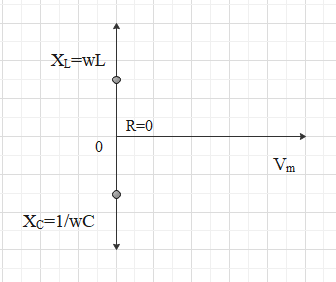Question
Question: he resonant frequency of the L-C circuit is, (A) \[\dfrac{1}{2\pi \sqrt{LC}}\] (B) \[\dfrac{1}{2...
he resonant frequency of the L-C circuit is,
(A) 2πLC1
(B) 2π1CL
(C) 4π1CL
(D) 2π1LC
Solution
In the L-C circuit the resonance occurs when the capacitive and inductive reactance are equal in magnitude because in the L-C circuit inductive reactance increases with the time and the capacitive reactance decreases with the time. At an instance time both the values become the same so the resonance occurs in the circuit.
Complete answer:
In this L-C circuit inductive reactance XL=ωLand capacitive reactance isXC=ωC1.
The current in the L-C-R circuit is given by I=∣Z∣Vmcos(ωt−δ)
And maximum current is given by I=∣Z∣Vm=R2+(ωL−ωC1)2Vm
But in L-C circuit the resistance is absent then the current is I=∣Z∣Vm=(ωL−ωC1)2Vm
Now the change in the value of ωleads towards the change in the current flowing in the circuit and for a particular value of ω=ω0 the current becomes maximum in the circuit. The denominator must tend to zero for the maximum current.

For that inductive reactance and capacitive reactance must be equal.
XL=XC
∴ω0L=ω0C1
∴ω02=LC1
∴ω0=LC1
Butω0=2πf0,
∴2πf0=LC1
And ∴f0=2πLC1
Here ω0 is called angular resonant frequency and f0 is called resonant frequency.
So, the correct answer is “Option A”.
Note:
Since XL=XC, Therefore, there is absolutely no reactive component to the total impedance at the resonant frequency. In the absence of any resistance, the current rises without limit and becomes theoretically infinite and the voltage source behaves like an almost short-circuit.
The real-world problem is that no circuit is complete without resistance, and the resistance present will serve to limit the current from the source. But for very small resistance it does not affect because the current remains high for very small resistance.
